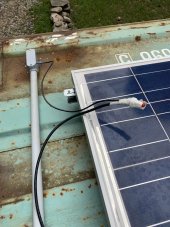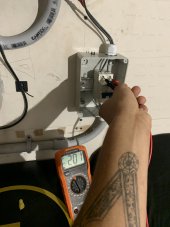Mannfamilywoodworks
Solar Enthusiast
Hello
I’m about to power on my system and start charging my new eg4 battery.
I wanted to triple check everything prior.
One thing is holding me up from turning everything on and I’m confused…
I’ve got this dc circuit breaker installed between my inverter and panels. My inputs are reading 200v with my multimeter with the breaker in the off position.
As soon as I switch the breaker to the on position it automatically switches to 1v?
Anyone know why?
I’m going to include pictures of the breaker and the specs.
I’m about to power on my system and start charging my new eg4 battery.
I wanted to triple check everything prior.
One thing is holding me up from turning everything on and I’m confused…
I’ve got this dc circuit breaker installed between my inverter and panels. My inputs are reading 200v with my multimeter with the breaker in the off position.
As soon as I switch the breaker to the on position it automatically switches to 1v?
Anyone know why?
I’m going to include pictures of the breaker and the specs.









